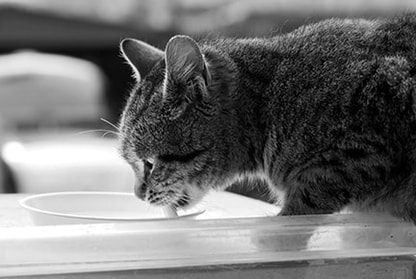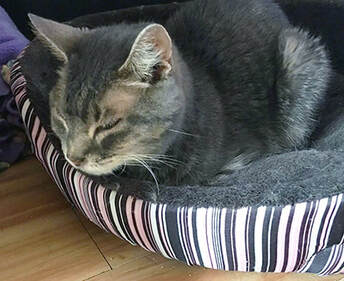
Has your cat been drinking a lot more water recently, and having to urinate more frequently? Has she begun losing weight despite being hungrier than usual and wanting to eat all the time?
If so, she may have diabetes. The second most common glandular disorder in cats (hypothyroidism is first), diabetes occurs as a result of a problem with insulin, the hormone that controls blood glucose levels. Similar to humans, cats suffer from two forms of diabetes. In Type 1 diabetes, the cat’s pancreas doesn’t make enough insulin. In Type 2 diabetes, the pancreas can make insulin, but its secretion is impaired. An estimated 80 percent of diabetic cats have Type 2 diabetes.
Should your cat be exhibiting these four classic symptoms -- increased thirst and water intake, increased urination, appetite gain and weight loss – bring her to the vet immediately.
To make a proper diagnosis, your vet will record all of your cat’s clinical signs, perform a physical examination, and collect blood and urine samples. The presence of elevated blood glucose together with excessive glucose in the urine is indicative of diabetes. Treatment will then depend on the severity of her symptoms, the test results, and whether she has any other health issues that could complicate her therapy. Since every cat responds differently to treatment, your cat’s therapy will be designed specifically for her.
New long-acting insulin preparations for humans such as glargine (brand name Lantus) and detemir (brand name Levemir) have also proven to be effective in cats, often resolving their diabetes completely. Which cats go into “diabetic remission” depends on their diet, the type of insulin used, how strictly their blood glucose is regulated, how early the treatment is started (the sooner the better), and whether their pancreas is capable of secreting insulin (as in Type 2 diabetes).
Diet is a vital part of your diabetic cat’s therapy. Numerous studies have shown that the ideal diet is a high-protein, low-carbohydrate one, with canned food preferred over dry food. There are many prescription diets designed for this purpose and most vets’ offices carry them.
Insulin by injection, however, is the mainstay of her therapy. Both human and veterinary insulin preparations are available, and while all of them work well, remission is more likely to be achieved with the above-mentioned long-acting human insulin preparations. The ideal spot for administering these injections is the loose skin between and around her shoulders (your vet or vet tech can demonstrate this for you).
Once your cat’s insulin therapy has started, her blood glucose levels must be assessed frequently to determine whether or not the dosage needs adjusting. Too little insulin and her diabetes won’t be controlled. Too much, on the other hand, can cause life-threatening hypoglycemia (low blood glucose). Fortunately, there are now blood glucose monitoring system kits specifically designed for cats (they include a specially calibrated meter, a lancing device, lancets, test strips, user’s guide and carrying case) that allow you to check her levels at home.
The small vein that runs around the edge of your cat’s ear is the easiest location to get a blood sample for the test. Your vet can tell you how often to test her, and you’ll be surprised at how well she tolerates it.
While “diabetic remission” is what every cat owner hopes for, not every cat will achieve it, and some who do may relapse at a later date. For the great majority of cats, however, diabetes remains a condition without a cure. But when managed effectively, your cherished companion can still live a long and loving life.










 RSS Feed
RSS Feed